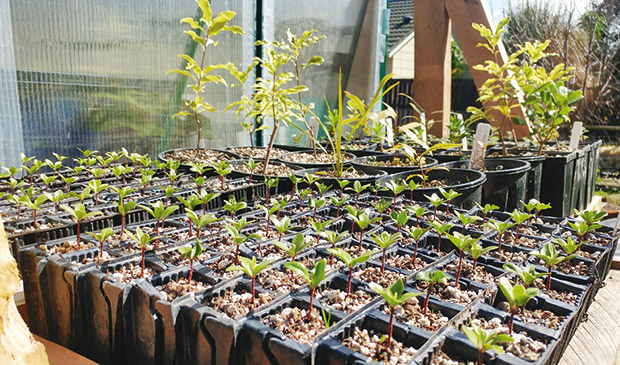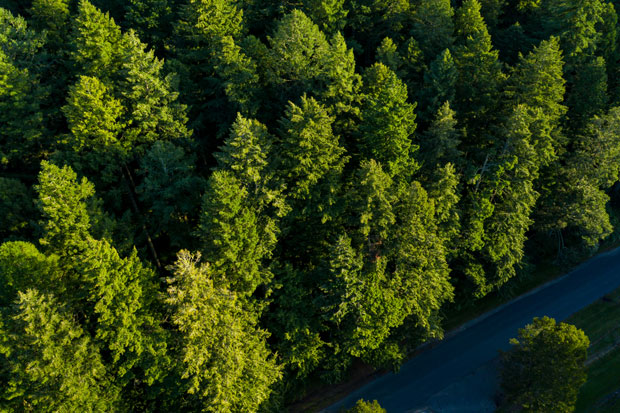An expert’s guide to the best trees to grow and the ones to avoid

A NZ Farm Forestry Association field trip, showcasing high-value timber forests.
Rachel Rose has helped to plant almost 5000 trees in the past two years. These are the best trees to grow and ones to avoid.
Words: Rachel Rose
The One Billion Trees (1BT) programme, run by the Ministry for Primary Industries (MPI) is a perfect opportunity for block owners wanting to start planting a forest. To take full advantage of it, careful planning is necessary.
Natives, particularly in wetlands or along waterways, are the best 1BT opportunity for block owners. 1BT also offers two big advantages over regional council funding:
1. You can lock in funding for multiple years of planting on a single application.
2. If you can reduce your costs by propagating trees yourself, the funding for natives will go a long way.

If you have basic propagation skills, growing natives from seed or cuttings isn’t difficult, and will slash your planting costs.
That’s because 1BT funds an agreed outcome, as opposed to a share of actual costs. 1BT isn’t interested in what the project costs you; it merely wants to see that you’ve planted enough of the right trees and that they’re surviving.
Tip: Radiata and manuka aren’t worth considering
Forget about making money from small areas of Pinus radiata, as it’s not economical to harvest. Manuka honey production requires vast tracts exclusively in manuka, something best suited to the remote backcountry. Harvesting manuka for oil production prevents the trees from reaching 5m, a requirement of 1BT funding.
GOOD PLANTING OPTIONS
We’re fired with enthusiasm for planting oaks for timber thanks to tree guru Eric Cairns of the NZFFA. Look up the Oaks New Zealand page on Facebook.
This isn’t an exhaustive list, but I recommend you consult your council’s planting publications and ask locals for advice, especially NZFFA and NZ Tree Crops members.
It’s also useful to match trees to your micro-climates (eg, conifers on cooler slopes; redwoods in fertile gully bottoms, well protected from wind; most eucalypts, above the frost line).

Author Rachel Rose in her Australian blackwood block. She’s checking one of the Kawa poplars that were planted as nurse trees.
PLANT TREES WITH MULTIPLE BENEFITS
Fast-growing shelter: Eucalyptus regnans, Eucalyptus nitens (for cold climates), Acacia dealbata.
Firewood: tagasaste, she-oaks, virtually any eucalyptus.
Erosion control: ask your regional council which variety of poplar is best suited to your conditions. We’ve found Australian blackwood (formerly Tasmanian blackwood) will lock up hillsides with its extensive root network, and she-oaks reputedly do the same.
Joinery: silver wattle (Acacia dealbata) produces beautiful timber in as little as 16 years, but it can be weedy.

Future timber (for the next generation to harvest):
– macrocarpa, ensure you plant from the provenances showing canker resistance;
– blackwood;
– redwoods, spend the extra money and plant clones if you want good form;
– Ovens cypress;
– eucalypts, get informed advice about which ones will suit your site.
Trees we chose to grow include:
– selected eucalyptus, for nectar and ground-durable timber;
– pin oaks in the wetland to feed ducks, provide timber, add to soil litter, and look stunning;
– redwoods, to sequester carbon for many hundreds of years;
– acacia that can be fed to stock;
– poplar varieties for valuable timber.
MORE HERE
Bee talk: Trees with the highest pollen count and trees you should avoid
Love this story? Subscribe now!
 This article first appeared in NZ Lifestyle Block Magazine.
This article first appeared in NZ Lifestyle Block Magazine.
